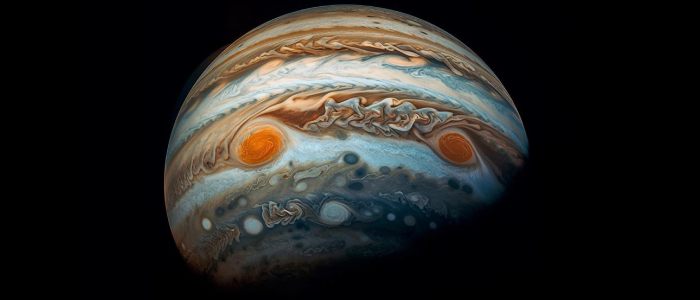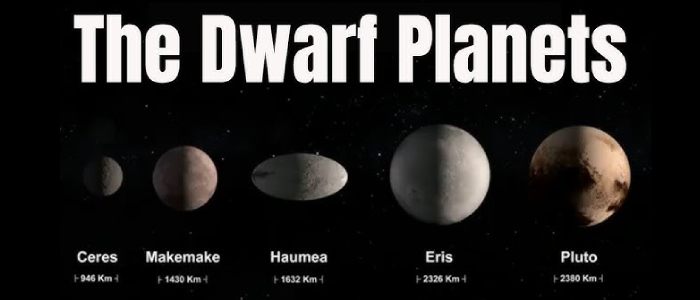Probably the most fascinating things in the world are planets. What is a planet anyway? The word planet has evolved over time and has a physical meaning in science today. Moreover, planet formation is a millions of years process. We will discuss what it is to be a planet & how planets develop.

What Is a Planet Exactly? The Definition from the International Astronomical Union (IAU)
In 2006, the IAU defined what a planet is. A planet must meet three criteria, the IAU says:
- It has to orbit a star – our Sun.
- It must be spherical because the planet is large enough that gravity pulls it roughly round.
- It must have emptied its orbit of other debris, so it is now the largest gravitational body orbiting the star.
This Definition was developed after several small bodies in our solar system had been found to be incorrectly classified as “dwarf planets” since they don’t meet the third criterion.
Different Types of Planets in Our Solar System
The solar system has two kinds of planets: Venus and Earth. Terrestrial planets & gas giants.
Planets with solid surfaces are terrestrial planets like Mercury, Venus, Earth, and Mars.
Gas giants such as Jupiter and Saturn and ice giants such as Uranus and Nebula are mostly hydrogen, helium, and other gases. They lack solid surfaces like the terrestrial planets.
Beyond these, astronomers have discovered exoplanets – planets orbiting stars outside our solar system, some of which are similar to Earth.
How Do Planets Form? The Birthplace of Planets: The Protoplanetary Disk
Planet formation begins on a protoplanetary disk. These disks surround young stars and are made of materials that were used to form the star itself. Essential elements like hydrogen, helium, carbon, and oxygen make up this disk.
Particles in the disk smash together and get bigger over time. This is accretion. They form smaller clumps that eventually become the seeds of planets – planetesimals.
Planetesimals: The Seeds of Planet Formation.
Dust particles within the protoplanetary disk collide to produce planetesimals – solid objects that are tens of kilometers in size. These larger planetesimals continue to smash together in gravity.
At some point, they become protoplanet-sized planetesimals. They are larger bodies that may one day become planets. At this stage, the protoplanet pulls in more material, accelerating growth.
Planet Formation and the Gravity Core Accretion Model
The most common theory of planet formation is called the core accrétion model. In this model, planets begin as small rocky or icy cores. The core starts drawing gas from the disk. This is particularly important when forming gas giants like Saturn and Jupiter, which have thick hydrogen and helium atmospheres.
Terrestrial planets form closer to the star because gas can not condense there. They thus get thin atmospheres and rocky compositions.
Disk Instability Model
Alternative theories include the disk instability model, which predicts giant planets formed when dense regions of the protoplanetary disk collapse in gravitational terms. This may happen more quickly than core advection, especially if the disk is large enough that gravity instabilities combine into clumps that form planets.
The Final Stages: Clearing the Disk
At some point, a planet dominates its surroundings. Its gravity pulls smaller debris in or flies it away, clearing its orbital path. This is necessary for the planet formation process since a planet that has not cleared its orbit is a “dwarf planet” instead of a full-fledged planet such as Pluto.

Giant Impacts and Planetary Evolution
Planets may also collide with other large bodies in huge impacts that alter their growth. These impacts can turn a planet around or tilt its axis – or create moons. For example, a Mars-sized body is believed to have hit Earth at the beginning of history to form the Moon.
These giant impacts shape the final planets – their atmosphere, moons, and rings.
Planetary Evolution: Early Planetary Development from Formation to Maturity
The surface of a planet can be violent early in its life. The atmosphere develops from volcanic activity, asteroid impacts, and gaseous emissions. On terrestrial planets, these early phases determine if the planet is habitable.
In the atmosphere, for example, volcanoes on Earth let gases like water vapor and carbon dioxide, in addition to nitrogen into the atmosphere where liquid water and life develop.
Tectonics and Atmosphere – A Role-Playing Field
Planets with active plates like Earth are evolving every billion years. Plate tectonics recycles gases between the atmosphere and inside of a planet. On Earth, tectonics stabilizes the carbon cycle.
An atmosphere is also needed for a planet to remain habitable long-term. An atmosphere controls temperature, blocks solar radiation from reaching the surface, and, in some cases, holds liquid water.
Exoplanets: New Worlds Search for Planets Beyond Our Solar System
In recent years, planets outside our solar system were discovered to have exoplanet characteristics. These days, astronomers have found a huge number of extraterrestrial planets. They are still looking for planets that may be in their stars ‘habitable zones – in which conditions are suitable for life -.
Such discoveries extend our understanding of planet formation and also show us a few of the planetary systems in the universe.
Planetary Exploration in the Future
Planetary exploration is in the future thanks to missions like the James Webb Space Telescope and the Transiting Exoplanet Survey Satellite, TESS. These missions will find out more about how planets form and whether they can hold life – answering fundamental questions about the origin of planetary systems.
Conclusion
Planet formation is an extraordinary process, starting with dust particles in a protoplanetary disk to fully formed planets orbiting stars. We continue to find out how planets form, change, and sometimes become habitable.
Scientists studying the formation of planets both in our solar system and faraway exoplanets are finding out the secrets of planet formation to better understand our varied universe.
